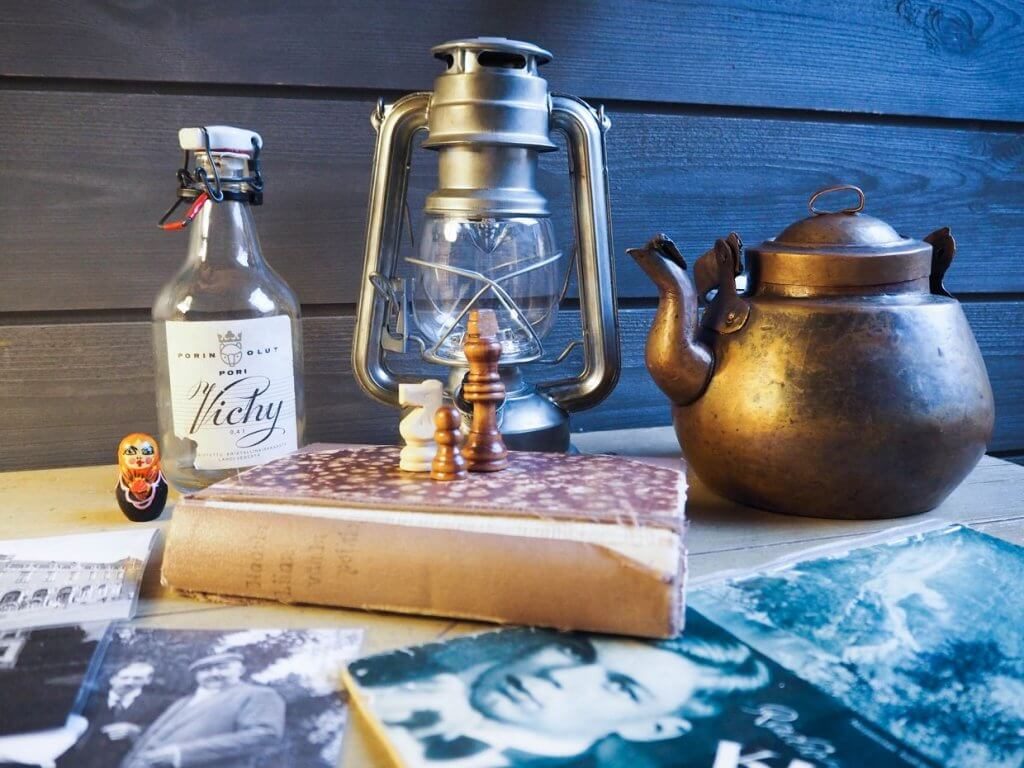Some escape rooms are experimenting with ways of bringing new genres into the scene
In their article titled ’Escape Rooms and the Seductive Ubiquity of Capture’ published in Analog Game Studies, Sawyer Kemp examines the role of narrative elements in escape rooms. The backstories of escape rooms usually involve escaping from monsters, bombs or other forms of violence, but what alternatives could there be?
Early ‘escape the room’ digital games didn’t need strong narratives, and often they gave no backstory at all. The point was simply to escape and win the game. However, live-action escape rooms must give players incentive to escape according to game rules through narratives, for which there are two main reasons. First, the escape room must be able to compete in the market by pulling customers with interesting settings. Second, it is often illegal to actually lock players inside the room, thus forcing the players to
pretend that they are imprisoned.
 Escape room props in Tampere, Finland. Image source: Getaway.fi
Escape room props in Tampere, Finland. Image source: Getaway.fi
Escape rooms must make the players want to believe that escape is difficult and that there is a serious penalty for not succeeding, while also making them feel that an escape according to the rules is possible. Players enter a situation where they are wilfully bound by social constraints, and since tragedy often involves social constraints, most escape rooms deal with elements of tragedy in their backstories. However, comedy can be understood as escape from social constraints, which creates a completely different atmosphere for escape narratives.
Most escape room backstories are concerned with assumed male subjects, as the themes are usually ‘masculine’ in nature. They often exhibit masculine life-or-death situations, and threats prison sentences are very popular in escape room settings. However, some companies are introducing ‘feminine’ endings to escape rooms in which the players must succeed in something on time without the risk of imaginary death, for example. These scenarios can make the players get an artist ready for stage, or prepare a news agency press release within a limited amount of time.
The scenarios with ‘feminine’ endings trade threats of violence for the promise of success, therefore introducing the possibility of escape from social constraints. It is rather difficult to combine escape elements with genres other than tragedy, but these examples show that it is possible. It is not necessary for escape rooms to offer scenarios with life-or-death stakes.
Author and title: Sawyer Kemp, Escape Rooms and the Seductive Ubiquity of Capture
Published in: Analog Game Studies
Date: November 29, 2017
URL: http://analoggamestudies.org/2017/11/escape-rooms-and-the-seductive-ubiquity-of-capture/
Featured image: Geekandsundry.com. https://geekandsundry.com/wp-content/uploads/2016/03/the_alchemist_escape_room.jpg
You might also like
More from Game Research Highlights
How do you want to do this? – A look into the therapeutic uses of role-playing games
Can playing RPGs contribute positively to your wellbeing? A recent study aims to find out how RPGs are being used …
Eldritch horrors and tentacles – Defining what “Lovecraftian” is in games
H.P. Lovecrafts legacy lives today in the shared world of Cthulhu Mythos and its iconic monsters. Prema Arasu defines the …
Are Souls Games the Contemporary Myths?
Dom Ford’s Approaching FromSoftware’s Souls Games as Myth reveals the Souls series as a modern mythology where gods fall, desires …















